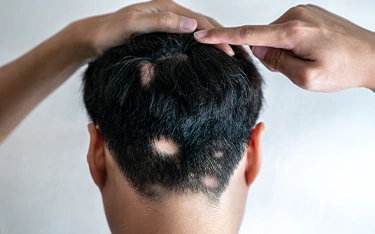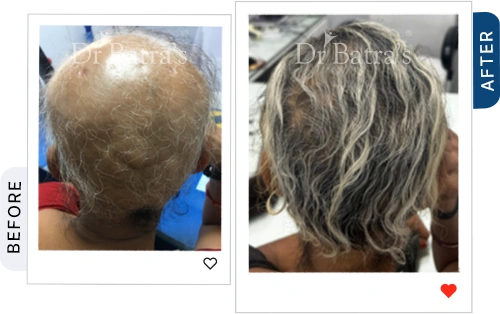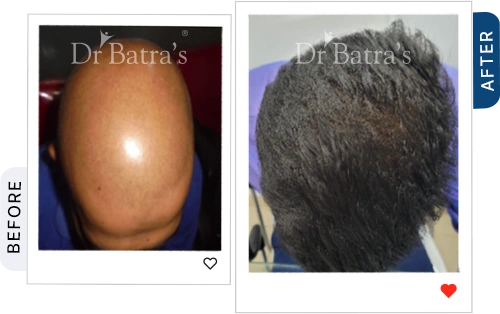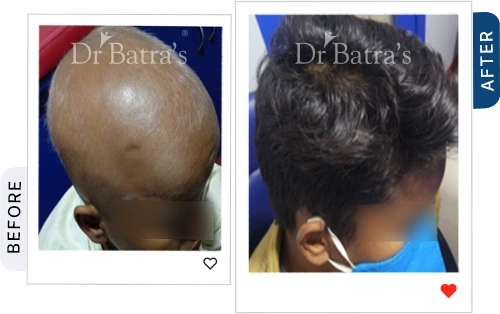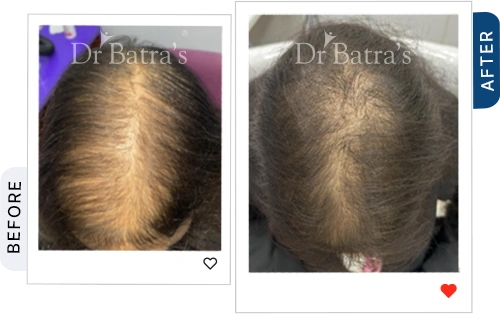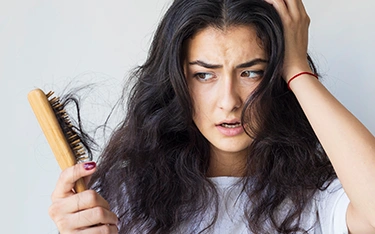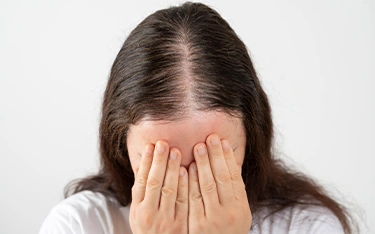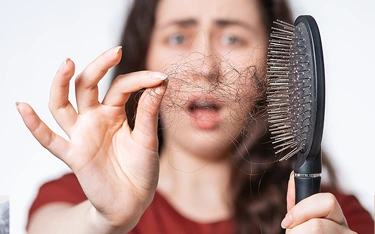FAQs
The most common sign (hair loss alopecia symptoms) is sudden patchy hair loss, where small, round bald spots appear on the scalp, beard, or body. The affected areas are smooth and hairless.
Alopecia Areata causes rapid, localised bald patches, unlike pattern baldness, which leads to gradual thinning. A doctor can confirm it through scalp analysis and medical history.
No, it can also affect eyebrows, eyelashes, beard, and body hair in some cases, especially in advanced stages like Alopecia Totalis or Universalis.
Most people do not feel pain or itching, but some may experience mild tingling or sensitivity in affected areas before hair loss occurs.
Yes, hair may regrow, often starting as fine, white strands before returning to its normal texture and color. However, hair loss may recur unpredictably.
